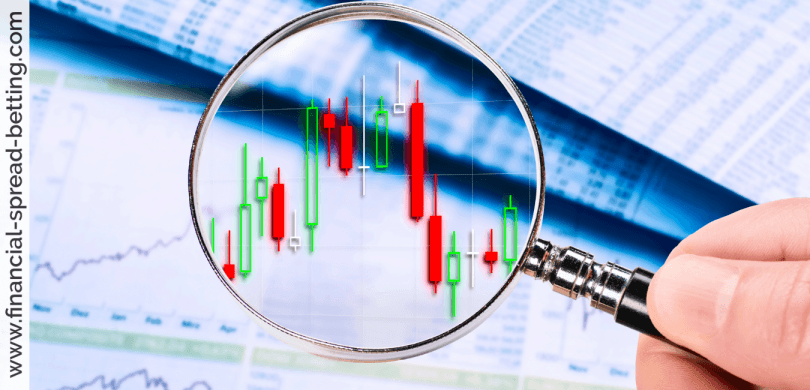When ‘Fixed Odds Trading Master’ told me about his options trading system I had no idea it was all going to be about technical analysis. Because at that time I’d never heard of it.
It was only when ‘Fixed Odds Trading Master’ explained a few simple technical items that made a lot of sense and proved that his trading was correct.
Technical Analysis
Here are a few glimpses of what it is about.
When trading, it is advisable to have a plan that works and financial risk management must be a part of that plan.
Sounds obvious doesn’t it? But there are many traders who do not have a plan – or if they do – they do not have a risk management money plan – to discipline them into having set entry and exit points.
Discipline is another key without which you cannot trade successfully.
Entry and exit points are vital. In fact when you leave a trade (exit/ sell) is more important then the point you enter it (buy).
To be a successful trader you must have and use rigorous stop profit/ stop loss techniques.
Fundamental v Technical Analysis
Traditionally information for traders came from fundamentalism.
Fundamentalism can be anything that fundamentally changes the sentiment about a share.
Annual reports, profit projections, currency changes, new discoveries, an oil well being spudded in, interest rates, mergers, takeovers, new management, striking workers, wars or terrorist attacks, board meetings, economic movements, industry
changes, anticipation of events, dividends, in fact whole heaps of stuff that fundamentally changes the way a share is sentimentally perceived. And subsequently changes the price.
Let me say now that I appreciate fundamentalism, but as it all ends up being reflected in ‘the market’ as the Open High Low and Close, all this fundamentalism can then be interpreted in hard price movement analysis.
Therefore I am more of a T A – technical analysis – person.
Always appreciate that ‘apart from vital fundamentals there is also technical analysis.’
TA as I shall call it is a whole heap more stuff all drawn from the Open, High, Low and Close.
What I am saying is that all the fundamental stuff is eventually converted into figures.
Into cash prices that buyers are prepared to pay for shares, or which sellers are willing to sell at.
Into technical analysis.
There are programmes around these days that have up to 100 or more technical tools available.
Unfortunately many of these programmes have little advice on how to use these indicators to your maximum advantage, nor do they tell you which of the many dozens of such indicators are important, or which of these have little value. Or which are repeating the same data interpretations in different but similar form.
Items such as Stochastic Oscillators, Candlestick Charting, The RSI (Relative Strength Index), Bollinger Bands, MACD, Momentum etc are a few of the really useful indicators, but only if you know how to interpret them and derive a second opinion that has meaning for you.
Tremendously clever people invented all these technical analysis indicators, and we are fortunate indeed that they are readily available for us regular traders to use.
I have outlined a simple way to make daily profits from trading options in my manual ‘The Digital Options Trading Plan’
Many technical analysis charting facilities are available on commercial products such as Metastock – or can be read in daily charting updates from the better information services on the Internet.
I’m going to tell you just about one technical analysis item that anyone who is holding shares, options, futures, currencies, bonds or whatever should be aware of and that is.
The PSAR (Parabolic Stop And Reverse Signal)
The Parabolic Stop And Reverse signal was designed by a stock broker for his clients so that they could get out of a share they were holding, when the PSAR indicated that a reverse in the trend had occurred.
There’s a lot of sense in that. Especially as those without a plan do not know when to sell.
For trading purposes I find this works both ways.
It shows as a general guideline when to get out and when to get in.
Be aware that it is a delayed figure.
If the PSAR says ‘sell’ the share will already have begun it’s downward movement. In other words the PSAR did not pick the top. But it is declaring that the top has been and gone. The trend has changed.
If it says ‘buy’ the PSAR did not pick the bottom but the opinion is there that the bottom has already occurred. The trend has changed.
If you don’t think this is valuable information then trading is not for you.
It does virtually announce though, that the trend has changed, and if you are hoping for higher highs or lower lows these have already occurred.
It is the dummy’s sign to get in or get out.
I have found with most shares, this signal is correct 8 times out of 10.
In other words twice out of 10 it can be totally wrong. OK we can live with that. But it is not the gospel of the share brokers. It is a second opinion using technical analysis, that has a great chance of being correct.
It is an item of technical analysis which – if taken – along with other technical items – is as strong a second opinion of a trend change as you will get.
Remember we have already said that we trade with the trend.
The PSAR is telling us that a new trend has been established and it and statistics show has about an 80% chance of being correct.
Good trading odds.
I’ll send lesson seven tomorrow.
Great Trading.
Dean Roberts.

